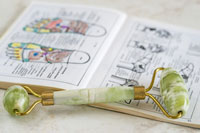Massage Therapist Specialty – Reflexology

Reflexologists target reflex points located in the feet and, to a lesser degree, those located in the hands and ears. Pressure points are believed to correspond to particular parts of the body. Thus applying pressure to them has global as well as local effects. The Reflexology Association of America (RAA) notes that there are hundreds of studies that document that the practice has therapeutic effects (http://reflexology-usa.org/reflexology-research).
Reflexology may, on the surface, seem very similar to acupressure. However, the points are not the same. The practices are also theoretically different. Though it has roots in ancient practice, modern reflexology dates to the early 20th century. Reflexology is already a well-developed discipline, with professional organizations active at the state and national level. One can practice solely as a reflexologist or specialize in reflexology while practicing multiple massage and bodywork techniques. Having a broad background provides a practitioner with the most career flexibility and the most credentialing opportunities.
Education
Students will often get some introduction to reflexology in general massage or bodywork programs. However, the training will be far less than they would get by taking a program specifically focused on reflexology. Programs accredited by the American Commission for Accreditation of Reflexology Education and Training (ACARET) offer fully 300 hours of education and training. Practitioners may achieve board certification, though, on the basis of shorter programs.
Licensed massage therapists may want to pursue additional training through continuing education providers approved by the National Certification Board for Therapeutic Massage and Bodywork – unless their own state requires them to be credentialed as reflexologists. In this instance, they will follow state requirements.
State Licensing
A practitioner who practices reflexology in conjunction with other modalities will generally be required to hold state licensing. If one practices only reflexology, this may or may not be a mandate. Licensing policies vary; many states exempt professionals who practice only on the hands, feet, and outer ears from licensure as massage therapists. However, reflexologists may be required to have some type of credential. Washington State, for example, recently enacted a law requiring reflexologists to be state certified (http://www.doh.wa.gov/LicensesPermitsandCertificates/ProfessionsNewReneworUpdate/Reflexologist).
The Reflexology Association of America (http://reflexology-usa.org/) has put together a resource sheet. It outlines which states have massage laws and which exempt reflexologists. It does not, however, reflect the most recent legislature. Massage therapists are advised to contact their state boards to verify information. They are also advised that some local municipalities may have their own laws in place.
State RAA associations can also be a resource; there are organizations in approximately 30 states.
There can be advantages to licensing even when it is not mandated.
Other Credentials
Practitioners can seek board certification through the American Reflexology Certification Board. They first become certified in foot reflexology and later have the option of becoming certified in hand reflexology. Candidates for either certification will need to pass both knowledge and practical assessments. Examinations are offered in major cities around the United States. However, in most locations, there is just one test date a year. The ARCB recognizes that many reflexologists will be traveling to test and advises them to make sure the examination will take place as scheduled before booking reservations. The prerequisite for foot certification is 110 hours (http://arcb.net/take-the-arcb-exam/); hand certification requires an additional 30 hours.
Membership in the Reflexology Association of America is another form of credential. The organization now requires 300 hours of education for professional level membership. At least 60% of the qualifying coursework must come from in-person classes. Some online coursework is permissible. Reflexologists who have completed an initial course may pursue additional training through a mentor or through self-study.